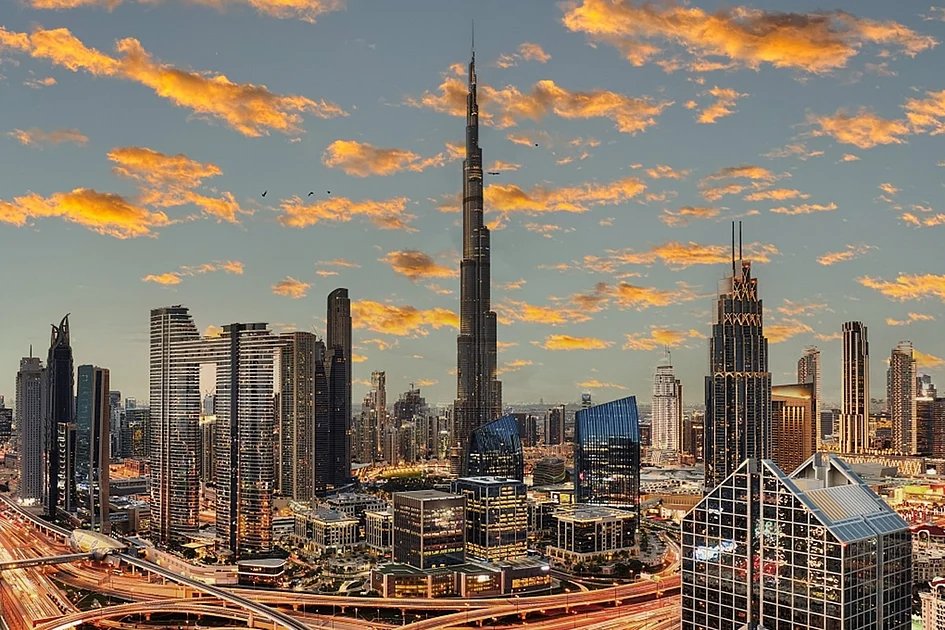Dubai’s economy continues to show remarkable resilience and forward momentum, supported by a diversified non-oil growth model, sustained foreign investment, robust tourism performance and a steady rise in population and business formation.
A recent analytical note by S&P Global Ratings highlights that Dubai’s strengthened fundamentals are enabling the emirate to withstand global and regional headwinds — even as geopolitical tensions, interest rate cycles and global trade volatility persist.
While S&P does not independently rate Dubai, its assessment draws from public data and reflects broad investor interest in Dubai’s macroeconomic outlook.
S&P expects Dubai’s real GDP growth to average around 2.9 per cent annually between 2025 and 2028. This projection builds on nearly two decades of consistent expansion — the emirate recorded an average of 3.5 per cent growth between 2007 and 2024 — and exceeded broader GCC growth in 2024, when Dubai grew by 3.2 per cent compared with the GCC average of around 1.5 per cent.
The UAE economy as a whole is forecast to grow by roughly 4 per cent annually over 2025-2028, supported by expanding non-oil activity and a gradual return of oil-related output growth in Abu Dhabi.
Dubai’s diversification remains one of its greatest strategic strengths. Non-oil sectors now contribute close to 70 per cent of the emirate’s nominal GDP. Wholesale and retail trade account for roughly 25 per cent, transportation and logistics 12 per cent, financial services 12 per cent, manufacturing 9 per cent, real estate 8 per cent and tourism around 4 per cent.
According to Oxford Economics and Dubai Chambers, the shift of global firms to the UAE, expansion of free-zone clusters and the growth of digital and fintech ecosystems continue to reinforce this economic mix.
The tourism sector remains a powerful growth engine. Dubai welcomed 18.7 million international visitors in 2024 — a 9 per cent increase from 2023 and one of the highest visitor counts globally, surpassing pre-pandemic records.
The momentum continued into 2025, with 9.88 million visitors in the first half alone, a 6 per cent rise year-on-year. Average hotel occupancy remains close to 80 per cent, and the number of available rooms increased only 1 per cent year-on-year, signaling strong demand absorption. The emirate’s tourism pipeline continues to expand, with new hospitality openings at Dubai Harbour, Expo City, JLT and Palm Jebel Ali.
Population growth further supports domestic demand. Dubai’s population reached approximately 3.9 million in 2024, rising 5.7 per cent year-on-year, driven by employment growth, relocation of international professionals and visa reforms, including the golden visa and long-term residency schemes. As a result, residential rental occupancy reached near 90 per cent in Q1 2025, according to ValuStrat — reinforcing sustained demand for housing and community infrastructure.
Dubai Municipality and the Dubai Land Department project population to exceed 5.8 million by 2040, aligned with the Dubai Urban Master Plan.
Foreign direct investment continues to accelerate. Dubai attracted Dh52.3 billion ($14.2 billion) in inbound FDI in 2024, a 33 per cent increase from Dh39.3 billion in 2023, according to Dubai FDI Monitor. The UAE remains among the world’s top 10 destinations for foreign investment, according to UNCTAD’s 2024 World Investment Report. Investment is concentrated in high-value sectors including finance, professional services, advanced manufacturing, tourism, technology and renewable energy.
The Dubai Economic Agenda D33 — which targets doubling the emirate’s economy to Dh32 trillion by 2033 — continues to draw global companies into free-zone clusters such as DIFC, DMCC, Dubai Internet City and Dubai South.
The financial services sector is expanding rapidly. The Dubai International Financial Centre (DIFC) reported record growth in 2024 with over 5,500 registered firms and total banking assets exceeding $650 billion. Asset and wealth management AUM in DIFC grew to more than $450 billion, supported by global fund managers relocating regional headquarters to Dubai. Meanwhile, DMCC surpassed 24,000 member companies in 2025, driven by crypto, commodities and trade finance firms.
Dubai’s non-oil foreign trade also continues to expand, reaching Dh1.4 trillion in the first half of 2024 — an 11.2 per cent increase year-on-year — with strong flows to Asia, Europe and Africa. The UAE’s Comprehensive Economic Partnership Agreements (Cepas) with India, Indonesia, Türkiye, South Korea and others continue to enhance trade diversification.
Inflation remains well contained, supported by the dirham’s peg to the US dollar and stable import pricing. S&P forecasts inflation at around 2.5-3.0 per cent annually through 2028. Consumer inflation averaged 3.3 per cent in 2023-2024 but eased to 2.9 per cent in September 2025, reflecting moderating housing cost pressures and lower global commodity prices.
However, S&P notes some structural risks remain. Dubai’s open economy is sensitive to global demand cycles and geopolitical shocks. Additionally, while government debt has fallen, liabilities linked to government-related entities still influence the fiscal outlook. Nonetheless, ongoing fiscal surpluses, improving balance sheet strength and prudent debt management since 2021 have fortified Dubai’s financial position.
In real estate, demand remains supportive, though analysts expect more moderate price growth over the next 12-24 months as new supply comes online. Grade-A commercial office space remains exceptionally tight, driving rents to their highest levels in over a decade, reflecting multinational corporate inflows. Residential demand remains buoyed by long-term residency reforms, entrepreneurship migration and rising investor confidence.
Overall, Dubai’s economic trajectory remains one of strength, adaptability and strategic clarity. Its diversified growth engine, global connectivity, investor-friendly environment and demographic expansion position the emirate to sustain momentum through the decade — even as global uncertainty continues to reshape economic landscapes worldwide.
